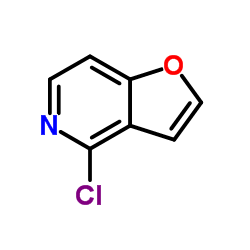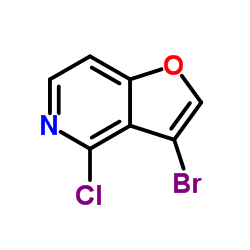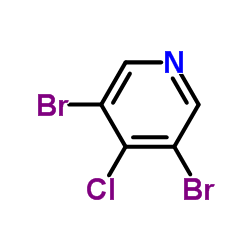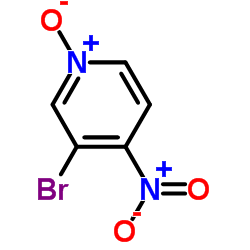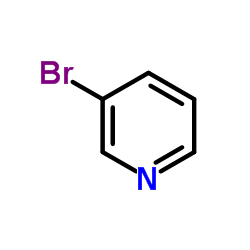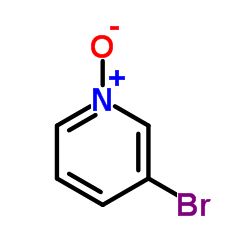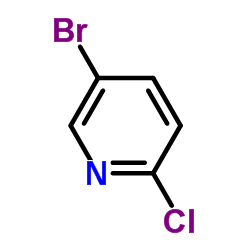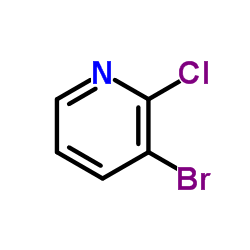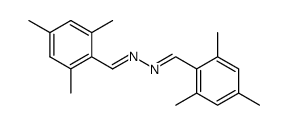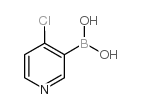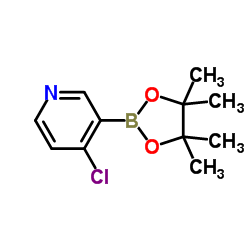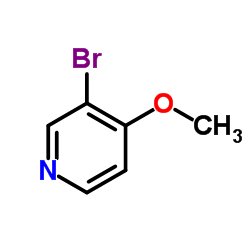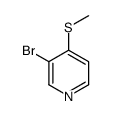36953-42-1
| Name | 3-Bromo-4-chloropyridine |
|---|---|
| Synonyms |
3-BroMo-4-chloridepyridine
3-Brom-4-chlor-pyridin 3-bromo-4-chloro-pyridine 4-Chlor-3-brom-pyridin MFCD00234008 4-CHLORO-3-BROMOPYRIDINE 3-bromo-2-chloro-pyridine 5-bromo-4-chloropyridine 3-BroMo-4-chloropyridine 1GR 3-Bromo-2-chloropyridine Pyridine, 3-bromo-4-chloro- bromo-3 chloro-4 pyridine 3-Bromo-4-chloropyridine Pyridine, 3-bromo-2-chloro- |
| Density | 1.7±0.1 g/cm3 |
|---|---|
| Boiling Point | 207.3±20.0 °C at 760 mmHg |
| Molecular Formula | C5H3BrClN |
| Molecular Weight | 192.441 |
| Flash Point | 79.2±21.8 °C |
| Exact Mass | 190.913727 |
| PSA | 12.89000 |
| LogP | 2.11 |
| Vapour Pressure | 0.3±0.4 mmHg at 25°C |
| Index of Refraction | 1.581 |
Synonym: Section 2 - COMPOSITION, INFORMATION ON INGREDIENTS
Risk Phrases: 20/22 36/37/38 Section 3 - HAZARDS IDENTIFICATION EMERGENCY OVERVIEW
Harmful by inhalation and if swallowed. Irritating to eyes, respiratory system and skin. Potential Health Effects Eye: Causes eye irritation. Skin: Causes skin irritation. May be harmful if absorbed through the skin. Ingestion: Harmful if swallowed. May cause irritation of the digestive tract. Inhalation: Harmful if inhaled. Causes respiratory tract irritation. Chronic: Not available. Section 4 - FIRST AID MEASURES Eyes: Flush eyes with plenty of water for at least 15 minutes, occasionally lifting the upper and lower eyelids. Get medical aid. Skin: Get medical aid. Flush skin with plenty of water for at least 15 minutes while removing contaminated clothing and shoes. Ingestion: Get medical aid. Wash mouth out with water. Inhalation: Remove from exposure and move to fresh air immediately. If not breathing, give artificial respiration. If breathing is difficult, give oxygen. Get medical aid. Notes to Physician: Treat symptomatically and supportively. Section 5 - FIRE FIGHTING MEASURES General Information: As in any fire, wear a self-contained breathing apparatus in pressure-demand, MSHA/NIOSH (approved or equivalent), and full protective gear. Extinguishing Media: Use water spray, dry chemical, carbon dioxide, or chemical foam. Section 6 - ACCIDENTAL RELEASE MEASURES General Information: Use proper personal protective equipment as indicated in Section 8. Spills/Leaks: Vacuum or sweep up material and place into a suitable disposal container. Section 7 - HANDLING and STORAGE Handling: Avoid breathing dust, vapor, mist, or gas. Avoid contact with skin and eyes. Storage: Store in a cool, dry place. Store in a tightly closed container. Section 8 - EXPOSURE CONTROLS, PERSONAL PROTECTION Engineering Controls: Facilities storing or utilizing this material should be equipped with an eyewash facility and a safety shower. Use adequate ventilation to keep airborne concentrations low. Exposure Limits CAS# 36953-42-1: Personal Protective Equipment Eyes: Not available. Skin: Wear appropriate protective gloves to prevent skin exposure. Clothing: Wear appropriate protective clothing to prevent skin exposure. Respirators: Follow the OSHA respirator regulations found in 29 CFR 1910.134 or European Standard EN 149. Use a NIOSH/MSHA or European Standard EN 149 approved respirator if exposure limits are exceeded or if irritation or other symptoms are experienced. Section 9 - PHYSICAL AND CHEMICAL PROPERTIES Physical State: Powder Color: off-white Odor: Not available. pH: Not available. Vapor Pressure: Not available. Viscosity: Not available. Boiling Point: Not available. Freezing/Melting Point: Not available. Autoignition Temperature: Not available. Flash Point: Not available. Explosion Limits, lower: Not available. Explosion Limits, upper: Not available. Decomposition Temperature: Solubility in water: Specific Gravity/Density: Molecular Formula: C5H3BrClN Molecular Weight: 192.44 Section 10 - STABILITY AND REACTIVITY Chemical Stability: Stable under normal temperatures and pressures. Conditions to Avoid: Incompatible materials. Incompatibilities with Other Materials: Strong oxidizing agents, acids, acid chlorides, acid anhydrides. Hazardous Decomposition Products: Hydrogen chloride, nitrogen oxides, carbon monoxide, carbon dioxide, hydrogen bromide. Hazardous Polymerization: Will not occur. Section 11 - TOXICOLOGICAL INFORMATION RTECS#: CAS# 36953-42-1 unlisted. LD50/LC50: Not available. Carcinogenicity: 3-Bromo-4-chloropyridine - Not listed by ACGIH, IARC, or NTP. Section 12 - ECOLOGICAL INFORMATION Section 13 - DISPOSAL CONSIDERATIONS Dispose of in a manner consistent with federal, state, and local regulations. Section 14 - TRANSPORT INFORMATION IATA Not regulated as a hazardous material. IMO Not regulated as a hazardous material. RID/ADR Not regulated as a hazardous material. Section 15 - REGULATORY INFORMATION European/International Regulations European Labeling in Accordance with EC Directives Hazard Symbols: XN Risk Phrases: R 20/22 Harmful by inhalation and if swallowed. R 36/37/38 Irritating to eyes, respiratory system and skin. Safety Phrases: S 22 Do not breathe dust. S 26 In case of contact with eyes, rinse immediately with plenty of water and seek medical advice. S 36/37/39 Wear suitable protective clothing, gloves and eye/face protection. WGK (Water Danger/Protection) CAS# 36953-42-1: No information available. Canada None of the chemicals in this product are listed on the DSL/NDSL list. CAS# 36953-42-1 is not listed on Canada's Ingredient Disclosure List. US FEDERAL TSCA CAS# 36953-42-1 is not listed on the TSCA inventory. It is for research and development use only. SECTION 16 - ADDITIONAL INFORMATION N/A |
| Hazard Codes | Xn:Harmful; |
|---|---|
| Risk Phrases | R20/22;R36/37/38 |
| Safety Phrases | S22-S26-S36/37/39 |
| HS Code | 2933399090 |
|
~96% 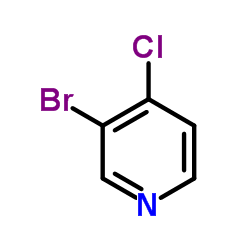
36953-42-1 |
| Literature: Betschmann, Patrick; Burchat, Andrew F.; Calderwood, David J.; Curtin, Michael L.; Davidsen, Steven K.; Davis, Heather M.; Frey, Robin R.; Heyman, Howard R.; Hirst, Gavin C.; Hrnciar, Peter; Michaelides, Michael R.; Muckey, Melanie A.; Rafferty, Paul; Wada, Carol K. Patent: US2005/26944 A1, 2005 ; |
|
~10% 
36953-42-1 |
| Literature: Trecourt, Francois; Breton, Gilles; Bonnet, Veronique; Mongin, Florence; Marsais, Francis; Queguiner, Guy Tetrahedron, 2000 , vol. 56, # 10 p. 1349 - 1360 |
|
~77% 
36953-42-1 |
| Literature: Trecourt, Francois; Queguiner, Guy Journal of Chemical Research, Miniprint, 1982 , # 3 p. 912 - 942 |
|
~% 
36953-42-1 |
| Literature: Trecourt, Francois; Queguiner, Guy Journal of Chemical Research, Miniprint, 1982 , # 3 p. 912 - 942 |
|
~% 
36953-42-1 |
| Literature: Trecourt, Francois; Queguiner, Guy Journal of Chemical Research, Miniprint, 1982 , # 3 p. 912 - 942 |
|
~% 
36953-42-1 |
| Literature: Trecourt, Francois; Queguiner, Guy Journal of Chemical Research, Miniprint, 1982 , # 3 p. 912 - 942 |
|
~% 
36953-42-1 |
| Literature: Yamanaka, Hiroshi; Araki, Tomio; Sakamoto, Takao Chemical and Pharmaceutical Bulletin, 1988 , vol. 36, p. 2244 - 2247 |
|
~% 
36953-42-1 |
| Literature: Belen'kii, L. I.; Poddubnyi, I. S.; Krayushin, M. M. Chemistry of Heterocyclic Compounds (New York, NY, United States), 1995 , vol. 31, # 6 p. 726 - 736 Khimiya Geterotsiklicheskikh Soedinenii, 1995 , # 6 p. 830 - 842 |
|
~%
Detail
|
| Literature: den Hertog; Boelrijk Recueil des Travaux Chimiques des Pays-Bas, 1951 , vol. 70, p. 578 |
| Precursor 7 | |
|---|---|
| DownStream 4 | |
| HS Code | 2933399090 |
|---|---|
| Summary | 2933399090. other compounds containing an unfused pyridine ring (whether or not hydrogenated) in the structure. VAT:17.0%. Tax rebate rate:13.0%. . MFN tariff:6.5%. General tariff:20.0% |

